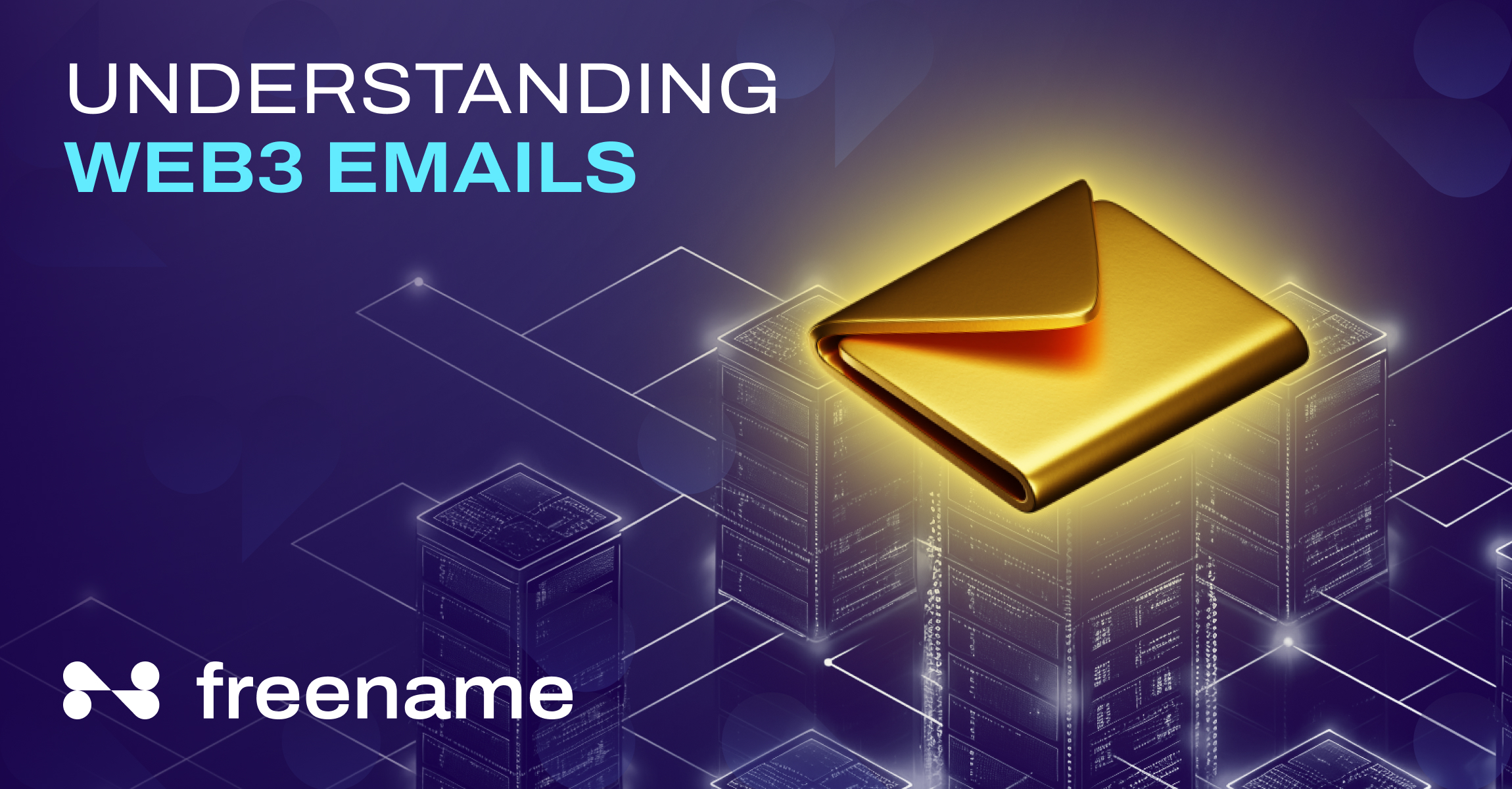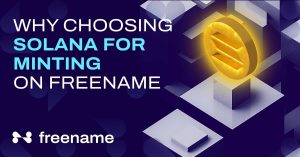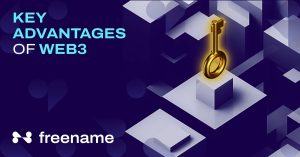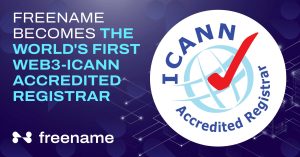What Is Web3 Email And How Does It Work?
Are you annoyed with unwanted promotional messages in your email folder? Unwanted and spammy messages account for 49% of all daily emails. It’s not only annoying but risky, too.
This is a flaw in traditional email systems that allow web scrappers to get customers’ email IDs for ad campaigns. It’s a big loophole that allows hackers to access users’ personal information illegitimately.
The potential drawbacks in traditional email systems gave way to a more sophisticated and impregnable system known as Web3 email. It’s a decentralized system powered by blockchain technology that guarantees uncompromised privacy, data security, anonymity, and distraction-free communication across blockchain platforms.
So, what is Web3 email? How it differs from traditional email systems? How can you apply it to your business? We’ll answer these questions in this post.
What Is a Web3 Email?
The basic concept of Web3 email—and how it differs from traditional email—concerns the technology working at the backend. This new type of email is based on a decentralized system of sending and receiving emails by leveraging blockchain technology.
Therefore, it follows the underlying principles of Web3, i.e., storing user data in nodes rather than a centralized system (Web2 servers). Web3 email aims to deliver a more open, transparent, and user-centric experience.
How Web3 Email Differs from Traditional Email
As mentioned earlier, traditional email systems are not safe enough. They rely on centralized servers for data storage. Email users do not enjoy complete control over their personal information or their data because email services like Yahoo and Google decide how to manage or share data.
These discrepancies often result in unwanted emails, spammy messages, and even data thefts. However, Web3 email has completely changed this experience.
Here’s a quick look into the basic differences between Web3 email and traditional email systems.
| Traditional Email | Web3 Email | |
| Operation | Proprietary protocols and systems. | Blockchain networks like Ethereum. |
| Storage | Stores data on centralized servers | Data is distributed across multiple nodes |
| Control | Google, Microsoft, and Yahoo have significant control over email storage, accessibility, and policies. | The user enjoys complete control over their email data and other personal information. |
| Data Ownership | Shared ownership, as data is stored on central servers owned by email service providers. Risk of data compromises or hacking. | Complete ownership and control over data. |
| Privacy & Security | The data is stored in central servers, hence making it an easy target for hackers. Email service providers may sneak in to send targeted ads. | The email data is end-to-end encrypted using complex cryptographic codes that are difficult to decode. |
| Interoperability | Web2 email systems are subject to service providers’ discretion. They operate within the boundaries set by their owners. | Web3 email is interoperable and compatible with almost all the digital assets on specific networks. |
| Integration | Web2 email needs APIS (subject to the maker’s policies) to integrate with other services. | Web3 email can be integrated with dApps without plugins. For example, it can be linked to DeFi platforms, NFTs, etc. |
| Transparency | Web2 protocols and systems are not transparent to users. | Open-source protocols allow users to verify the code and operation. |
| Trust | Placed on the email service provider to ensure privacy and security. | Decentralized authority fosters trust. |
Core Features of Web3 Email
As an advanced, sustainable tool, Web3 email ensures enhanced security and complete control. It is a paradigm shift from traditional email systems. Here’s a quick look into its core features:
Decentralization
The fact that Web3 email operates on decentralized networks like Solana, Ethereum, Ripple, and many others proves that no single entity controls your email data. There are no intermediaries, so the email is routed directly between users.
Blockchain technology stands on the decentralized infrastructure, distributing your data across multiple nodes. This prevents the risks of censorship, cyber threats, or single points of failure.
Key benefits of decentralization include:
- There is no central authority to dictate terms
- Peer-to-peer networking removes intermediaries
- Less susceptible to outages or censorship compared to centralized systems.
Enhanced Security
Many Web2 email service providers also claim end-to-end encryption. However, the data is still stored in central servers. This makes your email data an easy target for hackers and cybercriminals.
On the other hand, Web3 email offers decentralized storage, and the email messages are encrypted end-to-end. On top of that, blockchain email users can also employ cryptographic methods to secure their communications.
User Control and Ownership
Web3 email users enjoy complete ownership of their email addresses and data. Unlike traditional email systems, there are no intermediaries, so that Web3 users can send or receive emails directly.
By removing intermediaries, decentralized networks give users complete control over the content. What’s more, users can conceal their identity for anonymous communication or use cryptographic methods to add an extra layer of security to their communication.
Key features include:
- Users own their email addresses and can manage them independently.
- There are no intermediaries in between.
- Users can transfer email data between providers without losing control.
- There are options for concealing personal information during communication.
- Users can monetize their email data or attention through tokenization.
Interoperability
Web3 email is interoperable, meaning users from different email platforms across different networks can exchange information as seamlessly as those using the same network. This is just like the way traditional email systems work.
Google email users can communicate with Yahoo email users or other patented email platforms. Web3 email takes that experience to another level by removing checkpoints in between, allowing users to communicate directly.
In addition, Web3 email can integrate seamlessly with dApps, cryptocurrency wallets, NFTs, and other digital assets.
Advantages of Web3 Email
Improved Security and Privacy
Web3 email offers enhanced security and privacy, which is of prime importance during financial transactions.
- Firstly, your data is stored in a decentralized infrastructure that is virtually impossible for cybercriminals or any other entity to access.
- Secondly, email messages are backed by end-to-end encryption, ensuring that only the sender and recipient can access email content.
- Thirdly, blockchain-based encryption offers robust cryptographic methods to protect email content and metadata.
Resistance to Censorship
Web3 email improves communication from the confines of traditional email systems, where your email content may undergo surveillance—and you don’t know about it because the procedures aren’t transparent enough.
Traditional email systems are often governed by censorship policies and scrutinize random emails that may contain terms, phrases, or content that contradicts their standards. In contrast, Web3 email systems deploy no such tactics.
The decentralized infrastructure is transparent, allowing users to verify the code or the email system. It also offers peer-to-peer networking that removes intermediaries. Therefore, you have no risk of compromising your privacy for the sake of scrutiny.
Enhanced User Control and Data Ownership
Blockchain technology empowers its users to determine:
- Who can access their content,
- How they can interact with it.
They can deploy cryptographic codes to make sure only the intended user can access their messages. This exemplifies complete ownership and authority over the content.
Potential for Innovation and New Use Cases
Unlike traditional email systems, Web3 email is dynamic and offers more innovation opportunities. Examples include:
- Blockchain users can link their email addresses to their cryptocurrency wallets, NFTs, and other digital assets to get notified instantly. For example, users can effortlessly connect Ethermail to their crypto wallets to manage their digital assets.
- They can integrate their email with Web3 domains to communicate directly with other blockchain users using a single URL.
- Latest: Users can now tokenize their sensitive data and turn them into non-sensitive tokens. Tokenization will maintain data privacy and allow them to monetize their Web3 emails.
Challenges and Considerations
Although Web3 is more sustainable than traditional Internet, certain risks need to be addressed in the future. Addressing them will eventually help improve the Web3 email experience.
For now, blockchain email users may face these challenges.
Scalability
Still, there are scalability issues related to blockchain’s decentralized nature. For example, an offline node potentially disturbs the data flow, causing slower transaction speeds.
Adoption
The majority of users are familiar with Web2 emails and how they operate. They need to gain awareness regarding Web3 and its implementations.
These individuals may find Web3 emails more complicated in terms of interacting with the interface and managing security protocols. Therefore, maintaining a balance between security and ease of use is critical.
Potential Vulnerabilities in Decentralized Storage
Storing the data on a distributed network and ensuring it remains unchanged can be challenging. Vulnerabilities like slow data speeds, corrupted bits and pieces, and threats for Sybil attacks still exist.
Interoperability Issues May Suffice
It would be a big challenge for a Web3 email system to ensure interoperability and seamless integration across multiple networks and dApps. With new dApps and digital identities, the process will likely become more complex, leading to data loss or hacking threats during data transfer.
Uncertainties
Regulatory compliance and legal frameworks for decentralized communications are still evolving, adding uncertainty.
Use Cases and Applications
Web3 email IDs are ideal for integration with digital wallets, decentralized apps, NFTs, etc. Users can set their own Web3 email that ensures peer-to-peer communication backed by fool-proof encryption.
This tendency of Web3 email appeals to most individual users, such as cryptocurrency traders, NFT traders, whistleblowers, content creators, and potential domain investors. Even businesses can make good use of Web3 email.
Maintaining data integrity is a challenge for businesses, and central servers are vulnerable to cyber threats. Therefore, switching to these new types of email as your company’s collaboration system would be more feasible as it offers users an opportunity to collaborate in a highly secure environment.
How to Get Started with Web3 Email
Service providers like Mailchain, Ethermail, and Ledgermail offer robust security and interoperability for effortless email messaging.
For example:
- Mailchain is a .holdl domain and offers open-source protocols for sending and receiving emails across all blockchain networks.
- Ethermail offers unmatched wallet-to-wallet communication, setting the highest standards of anonymity and encryption.
- Or you can go for a more customizable option, such as Ledgermail.
Steps to Create a Web3 Account
Follow these simple steps to create your Web3 account:
- Step 1: Choose your email service provider. You can sign up and follow their specific steps to get registered.
- Step 2: Set up your digital wallet. The wallet will manage your blockchain identity.
- Step 3: Open your chosen email service provider to complete the integration process.
- Step 4: Verify your wallet address and supply other necessary information to get registered with the Web3 email provider.
- Step 5: Upon registration, you will receive private keys and phrases. Create backups to secure them properly.
- Step 6: Start managing your Web3 email through the service provider’s platform.
Best Practices for Using Web3 Email Securely
- Choose a reliable Web3 email service provider.
- Use strong passwords and verification codes.
- Make it a habit of saving private keys and recovery phrases – and creating backups.
- Always verify the code and the source to avoid phishing scams
- Your digital wallet must be updated regularly
- Regularly monitor your account activity.
The Future of Web3 Email
The Web3 email is in its infancy; however, the future looks bright.
Advancements and Developments
The future advancements include:
- Smooth and effortless integration with dApps,
- More sophisticated yet high-end privacy features,
- Improved scalability with better and more agile frameworks in place.
Web3 has a strong potential for development. We may see Web3 email boasting user-friendly interfaces and AI-powered spam filters in the future.
Future Predictions
Web3 will onboard more individuals seeking secure communication methods. Considering the following predictions, Web3 email will likely become a standard in user-controlled communication.
- The interoperability of these emails will improve with time.
- In the future, Web3 email will be able to integrate with mainstream platforms.
- The usage span will expand as more dApps enter the Web3 marketplace.
Conclusion
Web3 email differs from traditional email systems in many ways. It is powered by blockchain technology, which relies on decentralized infrastructure to store users’ information. The stored data enjoys robust protection thanks to end-to-end encryption and a customizable blockchain-based verification method.
Unlike traditional email, the email on Web3 resists censorship and offers complete control over your email address and the information you share. You can determine your recipient and send the message directly, bypassing the intermediaries.
Moreover, Web3 email is integrable and interoperable, so linking an email account with your digital wallet will remove hassles in digital asset management. This is why individuals have been switching to Web3 email providers like Mailchain, Ethermail, and Ledgermail. That said, their functionalities may differ.
Freename allow Freename domain owners to communicate directly using their blockchain-minted domains on encrypted email platform. This means that users can easily send and receive messages, files, and other data without the need for traditional email addresses or centralized email providers.
To get a customized solution, buy a Freename domain and integrate it with your Web3 email. Your Web3 domain will allow seamless interaction with dApps, tokens, smart contracts, and other assets. Meanwhile, your data will remain secure thanks to the unbreakable Ethereum blockchain.







